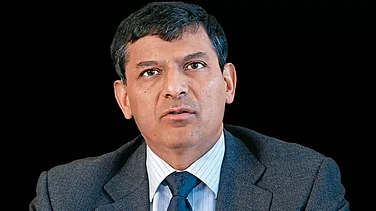It was the fifth consecutive Friday when the benchmark indices ended in the positive territory on a weekly basis. The Sensex and the Nifty gained more than 1.50 per cent. The Sensex peaked above 60,000 and the broader Nifty 50 was just shy of the 18,000 level. So, the question now is what next?
Markets May Enter a Volatile Phase Soon
Market experts are of the view that the most awaited correction will begin to raise its head from the trading week beginning Monday and some indication on this was seen in Friday’s trading

The answer lies in how trading pans out in the next trading week, beginning Monday, when the expiry of the September derivatives contract is slated next Thursday.
Market experts are of the view that the most awaited correction will begin to raise its head from the trading week beginning Monday and some indication on this was seen in Friday’s trading, when the advance decline ratio for September 24 fell deeply into the negative, suggesting nervousness among market participants about the broader market.
“Nifty is now close to 18,000 and once that round number is achieved, we could see a broad-based correction in the markets. The 17,645-17,792 band is the support for the Nifty,” said Deepak Jasani, head of retail research, HDFC Securities.
Technically, the correction is due and is visible in the immediate future. The valuations and every indicator on the Nifty suggest that the current run-up will take a breather. “It is difficult to say when that correction will come but we feel that it is long due and the markets will offer a decent correction before resuming its upward trajectory,” said Gaurav Udani, founder and chief executive officer, Thincredblu Securities.
Although both the Nifty and the Nifty Bank indices have closed on a high, we feel that the coming weeks will be volatile and markets may correct, he said. There are good support zones for each of these indices, with 36,500 standing strong for Nifty Bank and 17,300 for Nifty 50, Udani added.
It will be worth here to mention that Nifty touched a high of 17,947 and settled at 17,853.20 this week. While Nifty may be trading at new highs, Nifty Bank ended on a flat closing and continues to struggle around its previous all-time highs. The BFSI sector stocks have more than 35 per cent weightage in the Nifty. These stocks need to perform well to maintain the bullish momentum.
The mid-cap basket is showing signs of underperformance compared to the benchmarks. A failure to surpass the previous highs decisively will be a sign of weakness for the broader markets.
“The stocks have become overheated in the short term and investors should wait for prices to cool down before entering any long positions,” according to a note released by Samco Research.
The immediate support on the downside for Nifty is now placed at 17,600. “Traders are advised not to create aggressive longs at current levels, rather maintain a bullish bias and initiate longs on dips or around immediate support level,” the note said.
Small and Midcap indices underperformed during the week. BSE Midcap Index gained just 0.58 per cent, while the BSE Small-cap index lost 0.08 per cent as profit booking was noticeable in this space. “The broader space consisting of mid- and small-cap stocks was under pressure and this is expected to continue going ahead,” said Shrikant Chouhan, head of retail research, Kotak Securities.
Among sectoral indices, BSE Realty was the biggest gainer with a gain of around 20.3 per cent for the week, owing to an increase in property registrations, and cut in stamp duty in Karnataka and reduced home loan rates. It was followed by BSE Media with a gain of around 10.9 per cent and BSE IT with a gain of around 4.2 per cent.
Other sectoral gainers included BSE FMCG (gain of 0.6 per cent for the week), BSE Energy, which was up 1.2 per cent, and BSE Auto, which gained 0.3 per cent. Among sectoral losers were BSE Metal (down 3.7 per cent), BSE Power (down 2.7 per cent) and BSE Consumer Durable (down 0.4 per cent).
Global markets are volatile on the back of the Chinese real estate sector as Evergrande, the second-largest developer in China, is on the verge of bankruptcy. Also, the Federal Reserve is expected to start some form of tapering by the end of 2021, and once that happens market may see some reversal.
US markets were flat during the week. On September 22, Fed chairman Jerome Powell suggested that the central bank could start to dial back on its pandemic-era monetary stimulus before the end of this year. Also, if the US continues to see inflation running hot over the next few months, then the central bank could be forced to act quickly.
Chouhan said that going forward, Indian markets would keep eyeing signals from the Fed, the Evergrande crisis, commodity prices, the pace of vaccination in India, unlocking measures by various states, GST collection, the development of monsoon p-an India, progress on the Asset Monetisation Programme (AMP), and other reforms from the Central government.
Another macro indicator that may play spoilsport is rising inflation and the resultant rise in interest rates. This can result in removal of liquidity from the system. During CY21 there have been some central banks, including in Russia, Korea and Ukraine, that have raised rates.? Rising inflation risk and, hence, the withdrawal of ultra-easy monetary policy by global central banks (mainly the Fed) may trigger a sharp rise in bond yields which can cause riskier assets like equities to correct sharply.??
Piyush Garg, CIO, ICICI Securities said, “One can remain invested with a vigilant eye on the move in yields world over which can result in sharp 10-15 per cent correction from the current levels.”

























